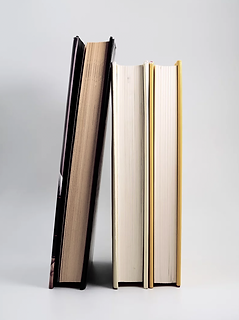THREE SUSTAINABILITY PILLARS

EFFICIENCY

LONGEVITY

RECOVERY
The resources we use to create products are divided into substance and energy. Substance is the physical resource we use to make a product and energy is the effort required to create and consume.
WHAT CAN BIOLOGY TEACH US?



Resources in Nature are limited. Biology is teaming with examples of smart ways to use substance with as little effort as possible.
We can learn from biology how to do more with less, such as using less materials to make things and design in ways that uses fewer processes that saves energy.
The limited nature of resources in biology has driven organisms to evolve clever ways to ensure their structures last as long as they need to.
We can learn from biology how to make our designs last longer by creating adaptable products that have multiple uses.
As resources in Nature are limited, they are rarely wasted. At the end of life the physical materials composing an organism are returned in the form of raw materials to support the life functions of other living organisms.
We can learn from biology how to design so that our products can be recovered at the end of their useful life.
BIO-INSPIRED EXAMPLES

Design for Efficiency
The humpback whale (Megaptera novaeangliae) is one of the largest animals on the earth. It can grow up to 15 metres (40 feet) long and weighs 40 tons, yet is capable of precise and agile maneuvers. For example, the humpback can swim in tight circles as narrow as 1.5 metres (5 feet) in diameter.
Scientists discovered that this extraordinary behaviour is made possible by the design of the pectoral flipper. The characteristically irregular large bumps along the leading edge of its flipper, called tubercules, enables the whale to manage the flow of water as it moves. This design has been applied to improve the efficiency of wind turbines.

Design for Longevity
In many plant species, it is important for seeds to travel far away from the parent plant and find their own space to germinate and grow. Without limbs and moving parts, plants have evolved a wide range of alternative methods of transportation. The seed pods (burs) of the burdock (genus Arctium) plant hitch a ride by firmly attaching themselves upon contact with a furry animal or human clothing and carried away.
Engineer George de Mestral wanted to find out why the burs were so tricky to remove from his clothes. He discovered, by looking under a microscope, that the prickly hairs were in fact hooks and was inspired to created a reversible, glue- less sticking mechanism. De Mestral collaborated with a textile mill to recreate the hook and fur system creating using textile manufacture methods and techniques. The result of this experimental endeavor is what we now know as Velcro. This reversible sticking system presents a mechanism for joining and fastening items without glue that enables multifunctional, adaptable features in many product categories such as garments and footwear extending the utility of products.

Design for Recovery
As designers, we often draw on multiple materials to introduce necessary properties to our products. For example, a traditional upholstered chair contains a range of both soft and hard materials, such as a wooden frame, metal springs, fibre stuffing and fabric covers. This makes recycling arm chairs at the end of their useful life, very difficult. What if we could create this type of product using only one material type?
In 2014, industrial designer Lilian van Daal was inspired by the structure of long bones such as the human femur, that have a light and spongy core protected by a stiff, dense outer layer, to reimagine the way we design an armchair. Lilian realised that, just like bone, she could create light and spongy areas (to sit on comfortably) as well as stiff and dense regions (weight bearing), by 3D printing with a single material.
Lilian was able to apply a simple idea from nature to re-imagine an everyday household object, that traditionally requires multiple materials to create (making it difficult to recycle), into a single material structure which promotes recovery at the end-of-use.
FIND OUT MORE...


